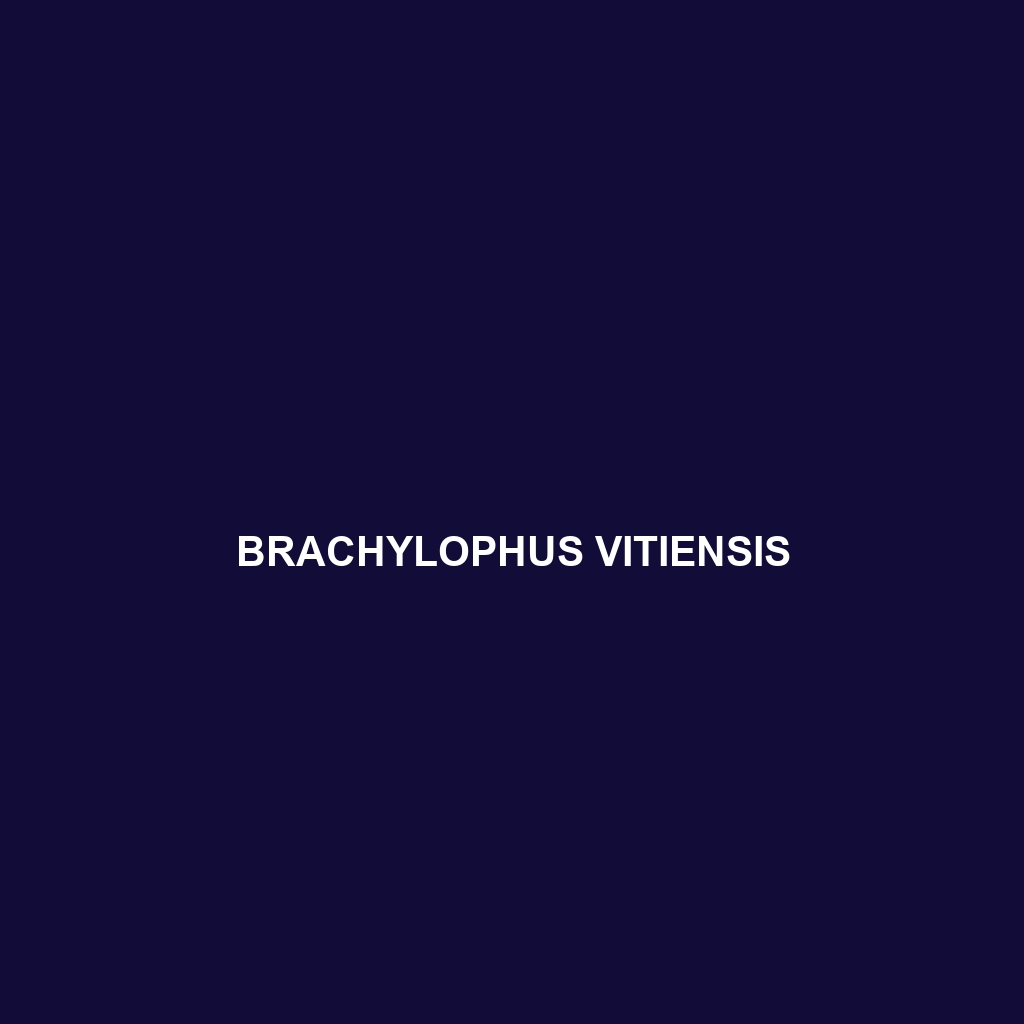Brachylophus vitiensis: A Detailed Species Description
Common Name: Brachylophus vitiensis
Scientific Name: Brachylophus vitiensis
Habitat
Brachylophus vitiensis, commonly known as the Fiji Banded Iguana, is primarily found in the tropical forests of Fiji, specifically on the islands of Viti Levu, Vanua Levu, and surrounding smaller islands. This species prefers humid, lowland forests and thrives in areas rich with native vegetation, making it highly dependent on the preservation of its natural habitat. Conservation efforts are crucial in protecting these environments from deforestation and urban development.
Physical Characteristics
The Fiji Banded Iguana typically reaches a length of about 60 to 90 centimeters (approximately 24 to 35 inches). It is characterized by its vibrant green color, often displaying yellow or white bands across its body, which serve as camouflage among the foliage. Its robust body has a distinctive casque on its head, contributing to its unique appearance. Adult males tend to be larger than females, showcasing a prominent crest along the spine, which can be an important characteristic for identification.
Behavior
Brachylophus vitiensis is diurnal, meaning it is most active during the day. This species is known for its arboreal lifestyle, often seen basking in the sun or climbing trees. Their behaviors include active foraging for food and establishing territories through territorial displays. During mating season, males exhibit vibrant displays of color and behavior to attract females, highlighting the importance of visual communication in their social interactions.
Diet
The diet of Brachylophus vitiensis primarily consists of leaves, flowers, and fruit, making it a folivorous species. Its feeding habits include a preference for native plants such as the Fijian Kava and various fruits found in their natural habitats. The iguana plays a crucial role in seed dispersal, thus contributing to the health of its ecosystem. Ensuring appropriate food sources is vital for the conservation of this species, which is threatened by habitat destruction.
Reproduction
Brachylophus vitiensis reproduces through oviparity, with females laying clutches of 2 to 9 eggs typically during the breeding season, which occurs from October to December. The eggs are buried in leaf litter to maintain the necessary humidity and temperature for incubation. After an incubation period of approximately 60 to 70 days, hatchlings emerge, showcasing their unique patterns and colors. The early life of the hatchlings is critical, as they must quickly adapt to evade predators.
Conservation Status
The Fiji Banded Iguana is currently listed as vulnerable by the International Union for Conservation of Nature (IUCN). This species faces threats from habitat loss, invasive species, and illegal pet trade. Conservation initiatives are ongoing to protect natural habitats and establish breeding programs to enhance population recovery.
Interesting Facts
One fascinating aspect of Brachylophus vitiensis is its capability to change colors slightly with environmental conditions, aiding in camouflage against predators. Additionally, this species is culturally significant to the Fijian people, symbolizing strength and resilience within their ecosystems.
Role in Ecosystem
Brachylophus vitiensis plays a vital role in its ecosystem as a herbivore and seed disperser. By consuming and dispersing seeds of various plants, it contributes to plant biodiversity and the overall health of forest ecosystems. Its interactions with other species highlight its importance in maintaining ecological balance and supporting native flora.
